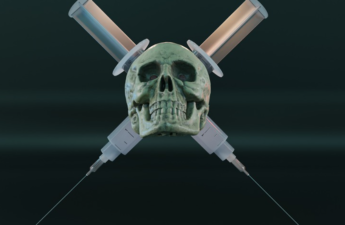
“Perhaps the greatest evil of immunization lies in its diversion of public attention from true methods of disease prevention. It encourages public authorities to permit all kinds of sanitary defects … It ignores the part played by food and sunlight and many other factors in the maintenance of health.” —— M. Beddow Bayly, M.R.C.S., 1944
In the New York Times article in 2004, “Merrill W. Chase, 98, Scientist Who Advanced Immunology,” Merrill W. Chase is recognized for discovering cell mediated immunity (part of the innate immune system), one of our first lines of defense against pathogens.
This is another component of our immune system, in addition to “humoral immunity.” Cell mediated immunity does not make use of antibodies in the bloodstream, while the humoral side of immunity (which vaccination “uses”) does.
It is surprising that the New York Times would print an article that undermines the vaccine paradigm. It is also surprising that a Rockefeller scientist would be allowed to engage in research that does so. But here we have it in the first sentence of the article, which calls Merrill W. Chase
an immunologist whose research on white blood cells helped undermine the longstanding belief that antibodies alone protected the body from disease and micro-organisms …
Anahad O’Connor, Merrill W. Chase, 98, Scientist Who Advanced Immunology (New York Times, January 22, 2004). Retrieved October 16, 2023, from https://www.nytimes.com/2004/01/22/nyregion/merrill-w-chase-98-scientist-who-advanced-immunology.html
Chase tried vaccinating a guinea pig for a disease, but found that the antibodies — obtained from another guinea pig — failed to result in immunity. Immunity only occurred when he changed his approach and used white blood cells.
Regarding the work of Dr. Chase, the article quotes from two Rockefeller University immunology professors:
“So many areas of medicine rely on this type of reaction that he clearly distinguished as not being antibody mediated.” — Dr. Ralph Steinman
“[I]n many instances it’s the cellular components that are more important.” — Dr. Michel Nussenzweig
So this article is from the mainstream media — and yet, the mainstream media has conveniently forgotten it. The vaccine industry and its minions carry on as if Chase’s work never existed, and that vaccination using antibodies sufficiently grants immunity from disease.
It is understandable, from an evil standpoint, that this is happening. Chase effectively cut the legs out from under the vaccine paradigm. He showed that injection with antibodies is insufficient to prevent disease. But the ignoring of Chase’s discovery by the elite also shows that the vaccine program is not about health — it is about money, and at the highest levels, harming us.
But let us move beyond just Chase on this issue of the immune system. Dr. Suzanne Humphries and Roman Bystrianyk say this in Dissolving Illusions: Disease, Vaccines, and the Forgotten History:
Vaccine scientists know that the immune system responds with more than just antibody, yet because markers of cell-mediated immunity are elusive, antibody has become the measure of whether or not a person is immune. …
The reason most people completely recover after acute infections is because of something called innate immunity. This involves a part of the immune system that requires no memory or previous exposure and does not involve preformed specific antibodies. Instead, it involves the activation of white blood cells, including macrophages, natural killer cells, and antigen-specific T lymphocytes, as well as the release of various cytokines (immune system proteins) in response to a foreign invader.
Suzanne Humphries and Roman Bystrianyk, Dissolving Illusions: Disease, Vaccines, and the Forgotten History (Suzanne Humphries and Roman Bystrianyk, 2015, 2013), 363-365.
All of this, of course, sounds like what has just been noted about Dr. Chase and the insufficiency of simply using antibodies to confer immunity. Also compare the last sentence in the quote above about the processes of the innate immune system with this from the New York Times article about Chase’s work and the immune processes it helped to discover:
His findings became the groundwork for later research that pinpointed B cells, T cells and other types of white blood cells as the body’s central safeguards against infection.
Anahad O’Connor, Merrill W. Chase, 98, Scientist Who Advanced Immunology
And so it is the innate immune system — not the stimulation of antibodies in the humoral immune system — that is the crucial component in combating ill-effects of disease.
Let us drive the point home more with more quotes.
The authors of this article raise an interesting point about the difficulty of asserting antibodies as preventative of disease if the innate/cellular immune response did so; they then admit antibodies may have been useless for “control of the initial infection”:
Specifically induced or acquired AMI [antibody-mediated immunity] involves the production of IgM, IgA, or IgG in response to a microbial agent or immunization. A paradoxical observation involving AMI is that specific IgG is often made after the host has recovered. In fact, a rise in serum IgG titer is a time‐honored method for diagnosing many infectious diseases. This observation begs the question of why IgG is made after recovery from most infectious diseases. Invoking a need to prevent recurrences is a somewhat unsatisfactory answer if the initial innate and cellular response was adequate to clear the first bout of disease. Nevertheless, an adaptive response that avoids recurrent bouts of a particular disease would have a significant survival advantage. The presence of serum IgG is a marker of immunity for many infectious diseases, even if IgG [antibodies] may not have been responsible for control of the initial infection.
Arturo Casadevall and Liise‐anne Pirofski, A Reappraisal of Humoral Immunity Based on Mechanisms of Antibody‐Mediated Protection Against Intracellular Pathogens (Advances in Immunology, Vol. 91, 2006), 8, 9.
Long before this, Dr. Herbert M. Shelton writes in 1928:
The whole of the modern medical practice of vaccine, serum and antitoxin therapy is based upon the supposition that the body manufactures substances called anti-toxins, anti-bodies, antigens, etc., which are capable of meeting and destroying toxins that get into the body. The idea seems to be sound, although it is possible that the work of destroying such toxins is that of the detoxification carried on by the liver, lymph glands, etc.
Herbert M. Shelton, Human Life: Its Philosophy and Laws: An Exposition of the Principles of Orthopathy (Oklahoma City, OK: How to Live Pub. Co., 1928), 31.
Humphries and Bystrianyk write about innate/cellular immunity:
This aspect of immunity is present regardless of vaccination and is highly dependent on essential nutrients. When cellular immunity is impaired — for instance, in leukemia — measles is disastrous.
Humphries and Bystrianyk, Dissolving Illusions: Disease, Vaccines, and the Forgotten History, 365.
It is, then, about nutrients — not vaccines (which actually destroy your immune system and health) and the antibodies they produce. Nutrients strengthen our immune system and protect us from serious illness. They can also help us to recover from it.
Here are some references that further drive the point home about the importance of nutrition and a healthy immune system:
“Nutrition Regulates Innate Immunity in Health and Disease,” Annual Review of Nutrition
In this review we elucidate emerging evidence that interactions between innate immunity and diet affect human metabolic health and disease, including cardiometabolic disorders, allergic diseases, autoimmune disorders, infections, and cancers.
Samuel Philip Nobs,1,* Niv Zmora,1,2,* and Eran Elinav, “Nutrition Regulates Innate Immunity in Health and Disease,” Annual Review of Nutrition, Vol. 40:189-219 (September 2020). Retrieved October 18, 2023, from https://www.annualreviews.org/doi/10.1146/annurev-nutr-120919-094440
“Vitamin D better than vaccines at preventing flu, report claims,” The Times
The risk of children suffering from flu can be halved if they take vitamin D, doctors in Japan have found. The finding has implications for flu epidemics since vitamin D, which is naturally produced by the human body when exposed to direct sunlight, has no significant side effects, costs little and can be several times more effective than anti-viral drugs or vaccine.
Oliver Ghillie, “Vitamin D better than vaccines at preventing flu, report claims” (The Times, March 18, 2010). Retrieved October 18, 2023, from
https://www.thetimes.co.uk/article/vitamin-d-better-than-vaccines-at-preventing-flu-report-claims-qw9nd359pc3
Dr. M. Beddow Bayly on B6 deficiencies
It also appears that in spite of the fact that it had been a matter of clinical observation that human beings suffering from a deficiency of Vitamin B6 have a lowered resistance to infection, a considerable number of monkeys were subjected by Bodiant [Bodian D. (1948) .Amer. Jour. Hygiene. 48, 87-93.] to an investigation in which they were deprived of this vitamin (pyridoxin) and then exposed to infection. The results seemed to confirm clinical experience.
M. Beddow Bayly, The Story of the Salk Anti-Poliomyelitis Vaccine (1956) (WHALE, Nov 2000. Supplied by John Wantling). Retrieved October 18, 2023, from http://www.whale.to/vaccine/bayly.html
Dr. Edward Mellanby on Vitamin A deficiencies
There is no doubt, however, that a diet devoid of vitamin A results in a great diminution in resistance to infection in human beings. One rich in fat-soluble vitamins and of high biological value increases the resistance to infection.
Edward Mellanby, Nutrition and Disease: The Interaction of Clinical and Experimental Work (1934). Retrieved October 18, 2023, from http://www.whale.to/a/mellanby.html
If you find this site helpful, please consider supporting our work.

